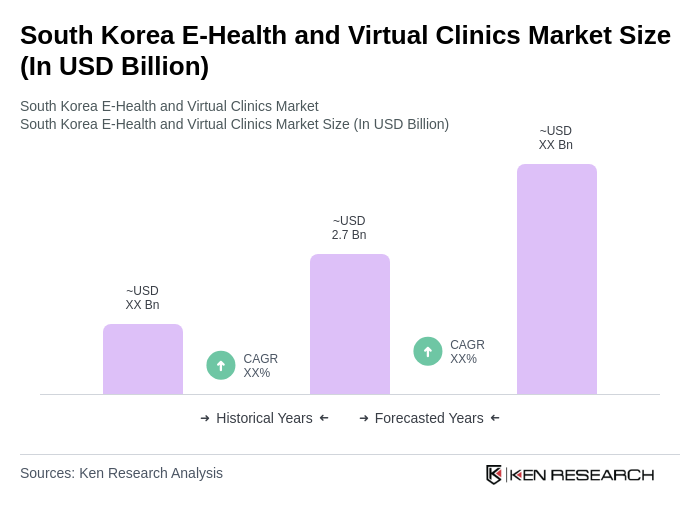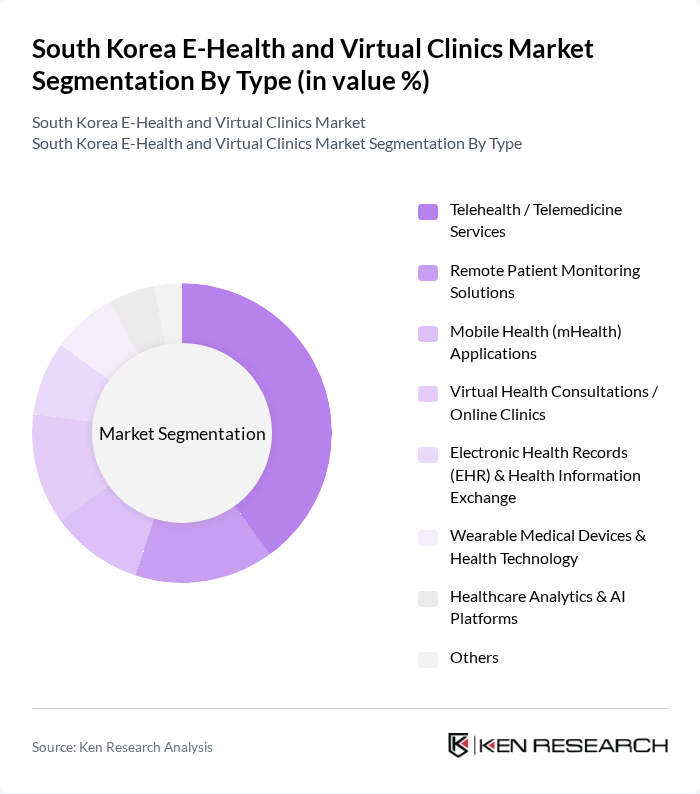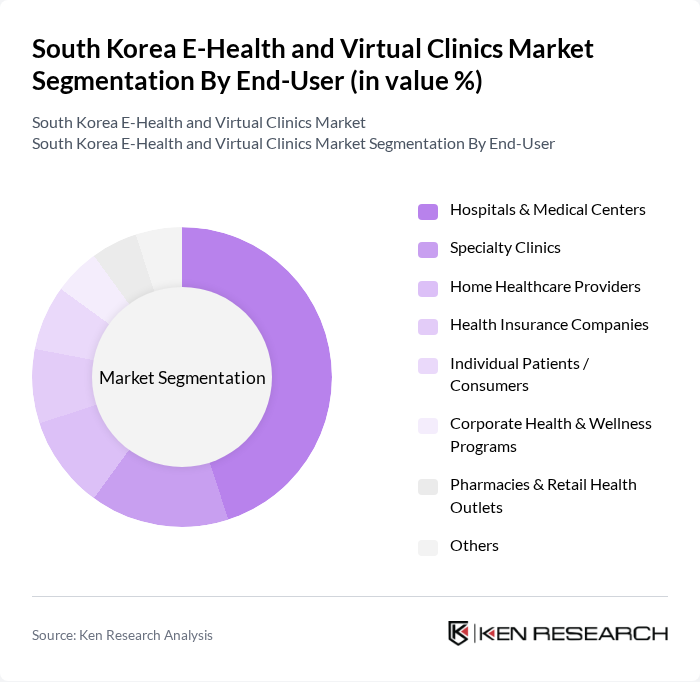Region:Asia
Author(s):Shubham
Product Code:KRAA3632
Pages:80
Published On:September 2025

By Type:The market is segmented into various types, including Telehealth / Telemedicine Services, Remote Patient Monitoring Solutions, Mobile Health (mHealth) Applications, Virtual Health Consultations / Online Clinics, Electronic Health Records (EHR) & Health Information Exchange, Wearable Medical Devices & Health Technology, Healthcare Analytics & AI Platforms, and Others. Among these, Telehealth / Telemedicine Services is the leading segment, driven by the increasing demand for remote consultations and the convenience it offers to patients. The COVID-19 pandemic has further accelerated the adoption of telehealth services, making it a preferred choice for many individuals seeking medical advice without the need for in-person visits. The market is also witnessing robust growth in Remote Patient Monitoring and mHealth Applications, fueled by the proliferation of connected devices and mobile platforms .

By End-User:The end-user segmentation includes Hospitals & Medical Centers, Specialty Clinics, Home Healthcare Providers, Health Insurance Companies, Individual Patients / Consumers, Corporate Health & Wellness Programs, Pharmacies & Retail Health Outlets, and Others. Hospitals & Medical Centers dominate this segment, as they are increasingly adopting e-health solutions to enhance patient care and streamline operations. The integration of digital health technologies in hospitals has proven to improve patient outcomes and operational efficiency, making it a critical focus area for healthcare providers. Specialty Clinics and Home Healthcare Providers are also expanding their digital health offerings, leveraging remote monitoring and telemedicine platforms to reach more patients .

The South Korea E-Health and Virtual Clinics Market is characterized by a dynamic mix of regional and international players. Leading participants such as Samsung Medical Center, LG CNS Healthcare, SK Telecom Healthcare (SKT Healthcare), Kakao Healthcare, Hanmi Pharm Co., Ltd., Medtronic Korea, Asan Medical Center, Seoul National University Hospital, Kyungpook National University Hospital, Hallym University Medical Center, Yonsei University Health System (Severance Hospital), Samsung Biologics, CJ Healthcare (CJ CheilJedang Bio Division), Daewoong Pharmaceutical Co., Ltd., GC Biopharma (formerly Green Cross Corporation) contribute to innovation, geographic expansion, and service delivery in this space.
The South Korean e-health and virtual clinics market is poised for significant growth, driven by technological advancements and increasing consumer acceptance. As the government continues to invest in telehealth infrastructure, the integration of AI and machine learning will enhance service delivery. Additionally, the aging population, projected to reach over 10 million in future, will further drive demand for accessible healthcare solutions. These trends indicate a promising future for e-health services, fostering innovation and improved patient outcomes.
| Segment | Sub-Segments |
|---|---|
| By Type | Telehealth / Telemedicine Services Remote Patient Monitoring Solutions Mobile Health (mHealth) Applications Virtual Health Consultations / Online Clinics Electronic Health Records (EHR) & Health Information Exchange Wearable Medical Devices & Health Technology Healthcare Analytics & AI Platforms Others |
| By End-User | Hospitals & Medical Centers Specialty Clinics Home Healthcare Providers Health Insurance Companies Individual Patients / Consumers Corporate Health & Wellness Programs Pharmacies & Retail Health Outlets Others |
| By Application | Chronic Disease Management Mental Health & Behavioral Health Services Preventive & Wellness Care Emergency & Acute Care Rehabilitation & Post-Acute Care Women’s Health & Pediatrics Others |
| By Distribution Channel | Direct-to-Consumer (D2C) Business-to-Business (B2B) Partnerships Online Health Platforms & Marketplaces Mobile Application Stores Hospital & Clinic Networks Others |
| By Pricing Model | Subscription-Based Pay-Per-Use / Fee-for-Service Bundled Service Packages Freemium & Tiered Models Insurance Reimbursement Others |
| By Technology | Cloud-Based Health Solutions AI-Driven Healthcare Platforms Mobile Health Technologies Data Analytics & Interoperability Tools IoT & Connected Medical Devices Others |
| By Policy Support | Government Subsidies & Grants Tax Incentives for Digital Health Regulatory Support & Fast-Track Approvals Public-Private Partnerships Others |
| Scope Item/Segment | Sample Size | Target Respondent Profiles |
|---|---|---|
| Telehealth Service Users | 120 | Patients, Caregivers |
| Healthcare Providers in E-Health | 90 | Doctors, Nurses, Administrators |
| Technology Providers for Virtual Clinics | 60 | IT Managers, Product Developers |
| Regulatory Bodies and Health Policy Makers | 40 | Policy Analysts, Health Economists |
| Insurance Companies Offering Telehealth Coverage | 50 | Underwriters, Claims Adjusters |
The South Korea E-Health and Virtual Clinics Market is valued at approximately USD 2.7 billion, reflecting significant growth driven by the adoption of digital health technologies and the demand for remote healthcare services, particularly accelerated by the COVID-19 pandemic.